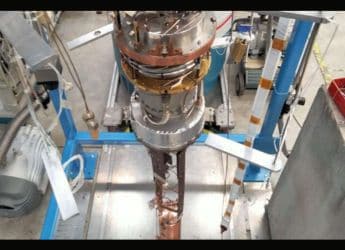- Home
- Science
- Science News
- Manned Missions to Mars Still at Least 15 Years Off: ESA Head
Manned Missions to Mars Still at Least 15 Years Off: ESA Head

"If there was enough money then we could possibly do it earlier but there is not as much now as the Apollo programme had," ESA Director-General Jan Woerner said, referring to the US project which landed the first people on the moon.
Woerner says a permanent human settlement on the moon, where 3D printers could be used to turn moon rock into essential items needed for the two-year trip to Mars, would be a major step toward the red planet.
US space agency Nasa hopes to send astronauts to Mars in the mid-2030s and businessman Elon Musk, head of electric car maker Tesla Motors, says he plans to put unmanned spacecraft on Mars from as early as 2018 and have humans there by 2030.
The ESA's Woerner said it would take longer.
A spacecraft sent to Mars would need rockets and fuel powerful enough to lift back off for the return trip and the humans would need protection from unprecedented physical and mental challenges as well as deep-space radiation.
Woerner would like to see a cluster of research laboratories on the moon, at what he calls a "moon village", to replace the International Space Station when its lifetime ends and to test technologies needed to make the trip to Mars.
That could be funded and operated by a collection of private and public bodies from around the world, he said in an interview at the ESA's Operations Centre.
"There are various companies and public agencies asking to join the club now, so they want to do different things, resource mining, in situ research, tourism and that kind of stuff. There is a big community interested," he told Reuters.
"The moon village is a pit stop on the way to Mars," Woerner said, adding that new 3D printing technology could be used to build material and structures out of rocks and dust, doing away with the cost of transporting everything needed for a mission.
"To test how to use lunar material to build some structures, not only houses, but also for a telescope or whatever, will teach us also how to do it on Mars," he said.
The ESA, working with Russia, in March sent a spacecraft on a seven-month journey as part of the agency's ExoMars mission, which will use an atmospheric probe to sniff out signs of life on Mars and deploy a lander to test technologies needed for a rover scheduled to follow in 2020.
Woerner said Europe was looking at ways to lower the cost of launches but did not plan to copy Elon Musk's SpaceX, which is trying to develop relatively cheap, reusable launch vehicles.
"We should not copy. To follow and copy does not bring you into the lead. We are looking for totally different approaches," Woerner said, adding the ESA was examining all manner of new technologies, including air-breathing engines that do not need to tap into oxygen from a spacecraft's tank.
© Thomson Reuters 2016
Catch the latest from the Consumer Electronics Show on Gadgets 360, at our CES 2026 hub.
Related Stories
- Samsung Galaxy Unpacked 2025
- ChatGPT
- Redmi Note 14 Pro+
- iPhone 16
- Apple Vision Pro
- Oneplus 12
- OnePlus Nord CE 3 Lite 5G
- iPhone 13
- Xiaomi 14 Pro
- Oppo Find N3
- Tecno Spark Go (2023)
- Realme V30
- Best Phones Under 25000
- Samsung Galaxy S24 Series
- Cryptocurrency
- iQoo 12
- Samsung Galaxy S24 Ultra
- Giottus
- Samsung Galaxy Z Flip 5
- Apple 'Scary Fast'
- Housefull 5
- GoPro Hero 12 Black Review
- Invincible Season 2
- JioGlass
- HD Ready TV
- Laptop Under 50000
- Smartwatch Under 10000
- Latest Mobile Phones
- Compare Phones
- OPPO Reno 15 Pro Max
- Honor Win RT
- Honor Win
- Xiaomi 17 Ultra Leica Edition
- Xiaomi 17 Ultra
- Huawei Nova 15
- Huawei Nova 15 Pro
- Huawei Nova 15 Ultra
- Asus ProArt P16
- MacBook Pro 14-inch (M5, 2025)
- OPPO Pad Air 5
- Huawei MatePad 11.5 (2026)
- Xiaomi Watch 5
- Huawei Watch 10th Anniversary Edition
- Acerpure Nitro Z Series 100-inch QLED TV
- Samsung 43 Inch LED Ultra HD (4K) Smart TV (UA43UE81AFULXL)
- Asus ROG Ally
- Nintendo Switch Lite
- Haier 1.6 Ton 5 Star Inverter Split AC (HSU19G-MZAID5BN-INV)
- Haier 1.6 Ton 5 Star Inverter Split AC (HSU19G-MZAIM5BN-INV)
















